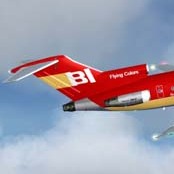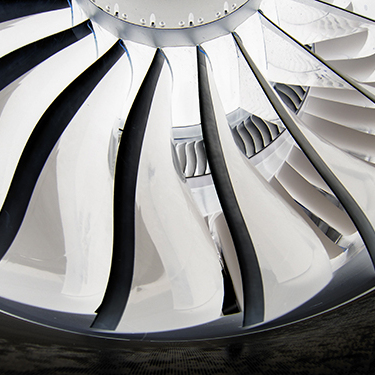My point distinguishes between (1) wingspan's utility and (2) the differential impact of quad vs twin for greater or lesser wingspan. For planes of greater size AND greater wingspan, the square-cube principle makes increases a quad's favorability. This is because big planes with big wings benefit relativelt more from wing bending relief than small planes with shorter wings.
Btw you said several things about wingspan that don't make sense. We can discuss further if you like.
It is far from necessarily true that a twin has lower maintenance costs. The A380 has lower engine mx per pax than the 77W, for example. This is because engine mx is mostly related to total thrust; quads require less total thrust, ceteris paribus
Dear Matt6461,
I would like to see how you would like to bring MCC down to 30% on an improved A388 versus B779.
Wing-bend relief of the quads has very marginal beneficial effects on performance if considering the same aiframe in a twin configuration.
Let's put it this way: considering that a twin-engined A380 will fill 70 tons of fuel in each wing on a 100 tons lower MTOW, does it matter for wing bend related issues whether there are 2 engines on a wing weighing 7 tons each or 1 big engine weighing 13 tons placed where the inboard one is? I think that the lower MTOW will overcompensate by huge margins the lower wing bend relief of not having an outboard engine.
Your wing bend relief argument is hence rejected.
You are welcome to discuss the wingspan things that don't make sense to you. I think that they make perfectly sense.
I also refute your claim that "The A380 has lower engine mx per pax than the 77W, for example", starting from the fact that "engine mx cost per pax" is a metric that has no meaning.
If we consider engine MX cost per ASM/ASK instead, I can assure you that the B77W has engine maintenance costs per ASM lower than the A380.
This is easily explained by the fact that engine maintenance costs is not measured in units of thrust, but man-hours and parts costs.
While engine size does affect the required man-hours to do the same task on different engine sizes to some extent, the difference is not huge when comparing large engines such as a single Trent 900 with a GE90.
It won't cost many more manhours to carry out a given scheduled task on a single GE90 versus the same task on a single Trent 900. Of more significance in this case is how accessible the component to be maintained is and here bigger engines actually have an advantage over smaller engines in that it's easier to make everything more accessible in terms of component location. So a bigger engine could, depending on the component and overall architecture, require less man hours for maintenance.
The parts are generally bigger on a bigger engine, but the cost relationship is not linear. Parts count is a much more important metric in this case and is what maintenance professionals use as benchmark to compare engine maintenance cost efficiency.
Of more significance is that unscheduled maintenance has similar occurrence rates between engines flying the same profile and missions, so having twice the amount of engines is just going to bring twice more risk of occurences, with AOG, IRROPS and pax in hotels and compensations as a result.
I'm staying on my point of view that a lower MTOW and slightly lighter twin with the latest engine technology, could reach the MCC of 30% that you're talking about versus the B779. In all other cases, MCC would be 60-70% at best on a stand-alone basis so it would only be worthwhile if the combination with other significant benefits such as engine interchangeability with A350's, similar purchase cost, cockpit commonality, surging airport and en-route costs, etc... would allow the MCC to get down to a point that it makes sense to have the risk of additional seats to fill and go for the A380 versus the B779.
At the end of the day, we come back to the fact that without significant changes, the A380 is dead in the water.






